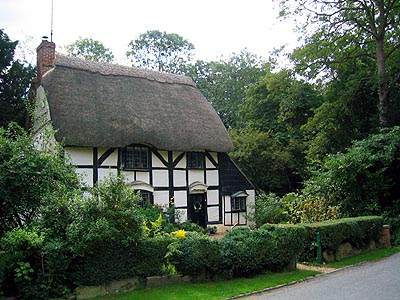 |
 |
|||
|
|
 Woolstone WoolstoneHome of Wade & Wulfric Woolstone had one of the most luxuriously fitted out Roman villas in Berkshire. When discovered, in 1884, it was found to have at least three geometrically patterned mosaic floors. Unfortunately, little was recorded about the excavation, though later small scale probing showed that it was occupied between the 2nd and 4th centuries. Woolstone may have been central to the legend of Wayland the Smith who is said to have lived at Ashbury. Wade’s Barrow (now Idlebush Barrow), in the south of the modern parish, may be named after his father. Although a more boring explanation is that the name means 'Watchman’s' or 'Beacon Barrow'. Originally Woolstone was part of the estate of 'Ashesbury' (alias Uffington) which was split in two in the AD 950s, around the time that the boundary was partially recorded in an old Saxon charter. tenth century. This place is named after a well documented King’s thegn called Wulfric who owned the village at the time. He also owned seven other villages in Berkshire, five in Sussex and two in Hampshire. The Woolstone Wells have been supplying the village with water since Saxon times and it is very pleasant to drink even today. They have connections with the ancient White Horse of Uffington which is said to get up from its hillside on occasion and take a drink there! Woolstone's most famous spot is the White Horse Inn, named after the same beast. Another extraordinary legend says that Wayland the Smith used to drink there before shoeing the horse! In the early 19th century the tavern's tenant was one William Noakes. He had a dispute with the Butlers at Woolstone Lodge (once a corn mill) and built an unusual Keble-College-style tower to overlook their property. It bears Noakes' initials and the date 1817. Woolstone was owned by the Bishop of Winchester from before the time of the Domesday Survey (1086). He built the little church there in 1195. It has a beautiful old lead font: one of only three in the county. The Bishop kept a granary in the village, but came into conflict with the Abbot of Abingdon who owned the adjoining village of Uffington. The 1327 dispute concerned some pastureland called Summerlease and it was decided that it should be resolved by combat! Unfortunately, the Bishop's man lost. Not long afterwards the village of decimated by the Black Death, as shown by the income collected by the Bishop, which was reduced by a quarter. The Saunders family lived at Hall Place, a second reputed manor in Woolstone, from at leats the early 1500s.. They were great benefactors to the village and, in 1617, Thomas Saunders set up a school in Uffington for twelve poor children, four of which were to come from Woolstone.
|
|||
| © Nash Ford Publishing 2004. All Rights Reserved. This location is now administered by Oxfordshire County Council. | ||||


